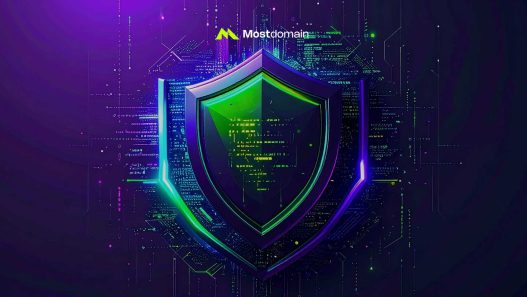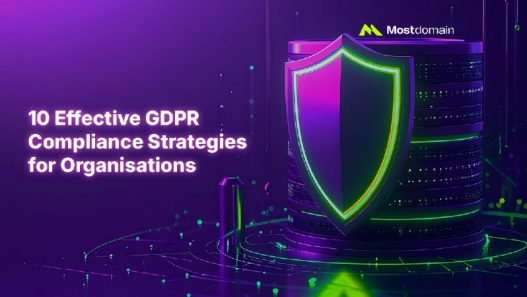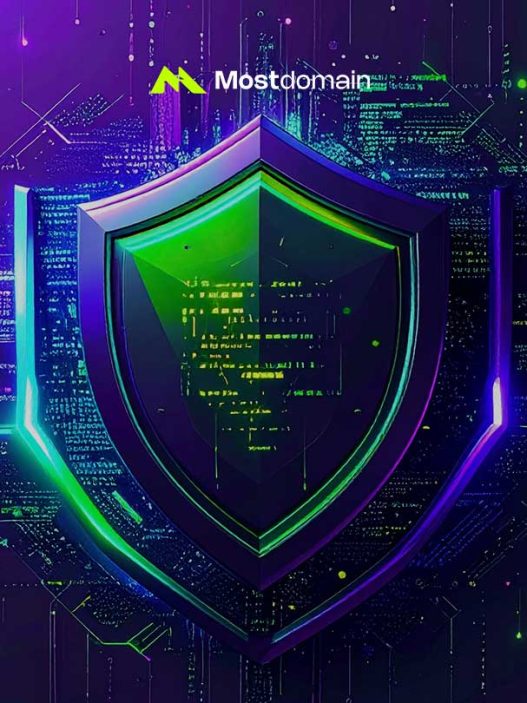Breaking: Recent industry reports reveal that 99% of organizations experienced API security incidents in 2024, yet only 21% can effectively detect attacks at the API layer. This comprehensive guide provides the roadmap to join the protected 1%.
API security best practices have become critical as organizations face an unprecedented surge in API-related cyber threats. In today’s hyper-connected digital landscape, APIs serve as the invisible backbone powering everything from your morning coffee app to billion-dollar financial transactions. Yet, while businesses race to deploy APIs for competitive advantage, a silent crisis unfolds: API attacks are projected to increase tenfold by 2030.
The statistics paint a sobering picture. With API usage growing at an unprecedented 167% year-over-year and 57% of organizations experiencing API-related data breaches in just the past two years, the question isn’t whether your APIs will be targeted—it’s whether you’ll be prepared when they are.
This guide cuts through the complexity to deliver actionable strategies, real-world examples, and a comprehensive implementation framework that transforms API security from a reactive afterthought into a proactive competitive advantage.
What Makes API Security So Critically Important in 2025?
The API security landscape has fundamentally shifted. Gone are the days when a simple authentication layer sufficed. Today’s threat actors leverage sophisticated AI-powered tools, automated attack chains, and exploit business logic vulnerabilities that traditional security measures completely miss.
The numbers tell the story: API vulnerabilities linked to AI have surged by an astounding 1,205%, with 99% of these incidents stemming directly from API security flaws. Meanwhile, 46% of Account Takeover attacks now specifically target API endpoints—a 31% increase from just two years ago.
Why Traditional Security Fails APIs
Unlike web applications with defined user interfaces, APIs present unique challenges:
Invisible Attack Surface: APIs often operate without user interfaces, making malicious activity harder to detect Data Concentration: APIs frequently aggregate and expose sensitive data from multiple sources Automated Targeting: Attackers use bots and AI to systematically probe API endpoints Business Logic Exploitation: 27% of API attacks now target business logic vulnerabilities rather than traditional security flaws
The OWASP API Security Top 10: Your 2025 Vulnerability Roadmap
The Open Web Application Security Project (OWASP) updated their critical API security vulnerabilities list for 2025, reflecting the evolving threat landscape. Understanding these vulnerabilities is essential for building robust defenses.
API1:2025 – Broken Object Level Authorization (BOLA)
The Crown Jewel of API Vulnerabilities
BOLA remains the #1 API security risk, accounting for approximately 40% of all API attacks. This vulnerability occurs when APIs fail to validate that users can only access objects they’re authorized to view or modify.
Real-World Example: An e-commerce API endpoint /api/orders/{order_id} that doesn’t verify if the requesting user owns the order. An attacker could simply increment order IDs to access other customers’ purchase history.
Vulnerable: GET /api/orders/12345
Secure: GET /api/orders/12345 + proper authorization check
Prevention Strategies:
- Implement proper access control checks on every object-level operation
- Use random, unpredictable object identifiers (UUIDs instead of incremental IDs)
- Enforce authorization at the data layer, not just the application layer
API2:2025 – Broken Authentication
The Gateway Vulnerability
Broken authentication enables attackers to compromise authentication tokens, exploit implementation flaws, or assume other users’ identities. This vulnerability has maintained its #2 position since 2019.
| Common Authentication Flaws | Impact | Mitigation |
| Weak password policies | Credential stuffing attacks | Enforce strong password requirements + MFA |
| Insecure token storage | Token theft and replay | Use secure, httpOnly cookies with proper expiration |
| Missing rate limiting | Brute force attacks | Implement progressive delays and account lockouts |
| Unencrypted credentials | Man-in-the-middle attacks | Always use HTTPS with proper certificate validation |
API3:2025 – Broken Object Property Level Authorization
The Data Exposure Merger
This new category combines two previous vulnerabilities: Excessive Data Exposure and Mass Assignment. It focuses on the lack of proper authorization validation when accessing or modifying object properties.
Industry Insight: “The merger of these vulnerabilities reflects the reality that both stem from the same root cause—insufficient property-level access controls.” – OWASP API Security Team
Prevention Framework:
- Implement field-level access controls
- Use data minimization principles—only return necessary data
- Validate input on property modification attempts
- Apply the principle of least privilege to data access
API4:2025 – Unrestricted Resource Consumption
The Silent Service Killer
APIs vulnerable to this risk lack proper resource consumption limits, making them susceptible to denial-of-service attacks and resource exhaustion.
Attack Scenarios:
- Volume-based attacks: Overwhelming the API with high request volumes
- Computational attacks: Triggering resource-intensive operations
- Storage attacks: Filling up storage systems with large payloads
Protection Strategies:
Rate Limiting Tiers:
├── Per-user limits (1000 requests/hour)
├── Per-endpoint limits (varies by resource intensity)
├── Global limits (system capacity-based)
└── Emergency throttling (attack response)
API5:2025 – Broken Function Level Authorization
The Privilege Escalation Gateway
This vulnerability allows unauthorized users to access administrative functions or perform operations beyond their privilege level.
Critical Checkpoints:
- Missing authorization checks on administrative endpoints
- Role-based access control (RBAC) implementation gaps
- Horizontal privilege escalation vulnerabilities
- Function-level access control bypasses
How Do You Build Bulletproof API Authentication?
Authentication serves as your API’s front door—and like any entrance, it needs multiple layers of security to be truly effective. The 2025 landscape demands a sophisticated approach that goes far beyond traditional username-password combinations.
OAuth 2.1: The Gold Standard Evolution
OAuth 2.1 consolidates security best practices from OAuth 2.0 while addressing common implementation vulnerabilities. This isn’t just an incremental update—it’s a fundamental shift toward more secure authorization flows.
Key OAuth 2.1 Improvements:
- PKCE requirement for all authorization code flows
- Elimination of implicit flow due to security concerns
- Stronger redirect URI validation to prevent open redirect attacks
- Enhanced token security with mandatory refresh token rotation
// OAuth 2.1 PKCE Implementation Example
const codeVerifier = generateCodeVerifier();
const codeChallenge = await generateCodeChallenge(codeVerifier);
const authUrl = `https://auth.example.com/oauth/authorize?
response_type=code&
client_id=${clientId}&
redirect_uri=${redirectUri}&
code_challenge=${codeChallenge}&
code_challenge_method=S256`;Zero Trust Architecture: Never Trust, Always Verify
The traditional security model of trusting internal network traffic is obsolete. Zero Trust APIs operate on the principle that every request—regardless of origin—must be authenticated and authorized.
| Traditional Model | Zero Trust Model |
| Trust internal traffic | Verify every request |
| Perimeter-based security | Identity-based security |
| Static access controls | Dynamic risk assessment |
| Network location matters | Identity and context matter |
Multi-Factor Authentication: Beyond the Basics
Modern API security demands sophisticated MFA implementations that balance security with user experience:
Adaptive MFA Strategies:
- Risk-based authentication: Trigger MFA based on unusual patterns
- Device fingerprinting: Recognize trusted devices
- Behavioral biometrics: Analyze typing patterns and interaction behaviors
- Time-based restrictions: Require re-authentication for sensitive operations
What Are the Most Effective Data Protection Strategies?
Data protection in API security extends far beyond basic encryption. It encompasses a comprehensive strategy that protects data in transit, at rest, and during processing—while maintaining performance and user experience.
Encryption Excellence: TLS 1.3 and Beyond
Transport Layer Security (TLS) 1.3 represents a quantum leap in connection security, offering improved performance and stronger cryptographic protections.
TLS 1.3 Advantages:
- Faster handshakes: Reduced latency with 1-RTT and 0-RTT connections
- Forward secrecy: Enhanced protection against future key compromises
- Simplified cipher suites: Elimination of vulnerable cryptographic algorithms
- Encrypted handshakes: Protection against traffic analysis attacks
# Nginx TLS 1.3 Configuration
ssl_protocols TLSv1.3;
ssl_ciphers TLS_AES_256_GCM_SHA384:TLS_CHACHA20_POLY1305_SHA256;
ssl_prefer_server_ciphers off;
ssl_ecdh_curve secp384r1;Data Minimization: The Less-Is-More Principle
The most secure data is data you don’t collect, store, or transmit. Data minimization reduces your attack surface while improving performance and compliance posture.
Implementation Framework:
- Collection Minimization
- Only request necessary data fields
- Implement progressive data collection
- Use just-in-time data retrieval
- Processing Minimization
- Filter sensitive data at the source
- Implement field-level encryption
- Use tokenization for sensitive identifiers
- Storage Minimization
- Implement automated data purging
- Use ephemeral storage for temporary data
- Apply retention policies consistently
Personally Identifiable Information (PII) Protection
With privacy regulations like GDPR, CCPA, and emerging state laws, PII protection is both a security and compliance imperative.
Compliance Note: Organizations face average fines of $4.88 million for data breaches involving PII, making protection strategies a crucial business investment.
PII Protection Strategies:
Data Classification Framework:
├── Public Data (no restrictions)
├── Internal Data (employee access only)
├── Confidential Data (role-based access)
├── Restricted Data (explicit authorization required)
└── Top Secret Data (C-level approval required)
How Can You Prevent Injection Attacks Effectively?
Injection attacks remain among the most dangerous and common API vulnerabilities. Modern attackers use increasingly sophisticated techniques that require equally advanced defensive strategies.
Input Validation: Your First Line of Defense
Effective input validation goes beyond simple data type checking. It requires a comprehensive understanding of data flows, business logic, and potential attack vectors.
Comprehensive Validation Strategy:
1. Schema-Based Validation
{
"type": "object",
"properties": {
"email": {
"type": "string",
"format": "email",
"maxLength": 255
},
"age": {
"type": "integer",
"minimum": 0,
"maximum": 150
}
},
"required": ["email"],
"additionalProperties": false
}2. Business Logic Validation
- Verify data relationships and dependencies
- Implement temporal validation (e.g., start date before end date)
- Check business rule compliance (e.g., sufficient account balance)
3. Security-Focused Validation
- Detect and reject malicious patterns
- Implement content security policies
- Use allowlist approaches over blocklist
SQL Injection Prevention: Parameterized Excellence
Despite being a well-known vulnerability, SQL injection continues to plague APIs. The solution lies in consistent implementation of parameterized queries and proper database access patterns.
Secure Database Interaction Patterns:
# ❌ Vulnerable to SQL Injection
query = f"SELECT * FROM users WHERE id = {user_id}"
# ✅ Secure Parameterized Query
query = "SELECT * FROM users WHERE id = %s"
cursor.execute(query, (user_id,))Advanced Protection Strategies:
- Stored procedures: Encapsulate database logic securely
- ORM frameworks: Use established, vetted data access layers
- Database permissions: Apply principle of least privilege
- Query allowlisting: Pre-approve known-safe queries
NoSQL Injection: The Modern Threat
As NoSQL databases gain popularity, injection attacks have evolved to target MongoDB, CouchDB, and other non-relational systems.
MongoDB Injection Example:
// ❌ Vulnerable
const user = await User.findOne({
email: req.body.email,
password: req.body.password
});
// ✅ Secure
const user = await User.findOne({
email: String(req.body.email),
password: String(req.body.password)
});Why Is Rate Limiting Your API’s Best Friend?
Rate limiting serves as your API’s immune system, protecting against both malicious attacks and unintentional abuse. In 2025’s threat landscape, sophisticated rate limiting strategies are essential for maintaining service availability and security.
Intelligent Rate Limiting Strategies
Modern rate limiting goes beyond simple request counting. It incorporates behavioral analysis, risk assessment, and adaptive responses to provide comprehensive protection.
Multi-Tier Rate Limiting Architecture:
| Tier | Scope | Limit Type | Example |
| Global | Entire API | Hard limit | 100,000 req/min |
| Per-User | Individual users | Sliding window | 1,000 req/hour |
| Per-Endpoint | Specific endpoints | Resource-based | 100 DB queries/min |
| Per-IP | Source IP | Suspicious activity | 10 failed auth/min |
DDoS Protection: Beyond Traditional Approaches
Distributed Denial of Service attacks against APIs require specialized protection strategies that consider the unique characteristics of API traffic patterns.
Advanced DDoS Mitigation:
- Traffic Pattern Analysis
- Establish baseline traffic patterns
- Detect anomalous request distributions
- Implement machine learning-based detection
- Adaptive Response Mechanisms
- Progressive rate limiting escalation
- Selective service degradation
- Emergency traffic filtering
- Geographic and Behavioral Filtering
- Country-based access controls
- Device fingerprinting validation
- Human behavior verification (CAPTCHAs)
Business Logic Protection
Rate limiting isn’t just about technical attacks—it’s crucial for protecting business logic and preventing economic exploitation.
Business Logic Scenarios:
- Inventory manipulation: Preventing rapid stock depletion
- Price arbitrage: Limiting rapid price checking for competitive intelligence
- Resource exhaustion: Protecting expensive computational operations
- Data harvesting: Preventing systematic data extraction
What Makes AI-Powered API Security Essential?
The integration of artificial intelligence in API security represents a paradigm shift from reactive to predictive protection. As attackers increasingly use AI to automate and enhance their attacks, defenders must leverage the same technologies to stay ahead.
AI-Enhanced Threat Detection
Machine learning models can identify subtle patterns and anomalies that traditional rule-based systems miss entirely. This capability is particularly crucial given the 1,205% increase in AI-related API vulnerabilities.
ML-Powered Detection Capabilities:
Anomaly Detection Framework:
├── Traffic Pattern Analysis
│ ├── Request frequency anomalies
│ ├── Payload size variations
│ └── Temporal access patterns
├── Behavioral Analysis
│ ├── User interaction patterns
│ ├── API usage sequences
│ └── Geographic access patterns
└── Content Analysis
├── Parameter value distributions
├── Request structure variations
└── Response pattern analysis
Automated Response Systems
AI-powered security systems can respond to threats in real-time, implementing countermeasures faster than human operators could react.
Automated Response Capabilities:
- Dynamic rate limiting: Adjust limits based on threat levels
- Intelligent blocking: Temporarily restrict suspicious sources
- Traffic rerouting: Redirect attacks to honeypots or sandboxes
- Alert prioritization: Focus human attention on critical threats
GenAI Security Considerations
The rise of Generative AI introduces new attack vectors that traditional security measures weren’t designed to address.
Security Alert: Prompt injection attacks can manipulate AI-powered APIs to bypass security controls, leak sensitive information, or perform unauthorized actions.
GenAI-Specific Protections:
- Input sanitization for AI prompts
- Output filtering to prevent information leakage
- Model access controls to limit AI capability exposure
- Audit logging for AI decision tracking
How Do You Choose the Right API Security Tools?
The API security tools landscape offers numerous options, from open-source solutions to enterprise platforms. Selecting the right combination requires understanding your specific needs, constraints, and risk tolerance.
Comprehensive Security Platform Comparison
| Platform | Strengths | Best For | Pricing Model |
| Salt Security | AI-powered detection, comprehensive coverage | Large enterprises | Contact sales |
| Noname Security | Runtime protection, compliance focus | Regulated industries | Per-API pricing |
| Traceable AI | Behavioral analysis, threat intelligence | High-risk environments | Subscription-based |
| 42Crunch | Developer-focused, DevSecOps integration | Development teams | Per-developer pricing |
| StackHawk | DAST testing, CI/CD integration | Continuous testing | Per-application pricing |
Open Source vs. Commercial Solutions
Open Source Advantages:
- Cost-effective for smaller organizations
- Customizable to specific needs
- Community-driven development
- Transparent security implementation
Commercial Platform Benefits:
- Professional support and SLAs
- Advanced threat intelligence
- Comprehensive compliance reporting
- Enterprise integration capabilities
Tool Selection Framework
1. Assessment Phase
- Inventory existing APIs and their risk levels
- Identify current security gaps and requirements
- Evaluate team capabilities and resources
- Define success metrics and KPIs
2. Evaluation Phase
- Test tools in controlled environments
- Assess integration complexity
- Evaluate vendor support quality
- Calculate total cost of ownership
3. Implementation Phase
- Start with highest-risk APIs
- Implement in phases to minimize disruption
- Train teams on new tools and processes
- Monitor effectiveness and adjust as needed
What’s Your 90-Day API Security Implementation Roadmap?
Transforming API security isn’t a one-time project—it’s an ongoing process that requires systematic implementation, continuous monitoring, and regular updates. This roadmap provides a practical framework for establishing robust API security within 90 days.
Days 1-30: Foundation and Discovery
Week 1-2: API Discovery and Inventory
- Catalog all existing APIs (documented and shadow APIs)
- Classify APIs by risk level and data sensitivity
- Document current authentication and authorization mechanisms
- Identify APIs lacking security controls
Week 3-4: Security Assessment
- Conduct vulnerability scans on high-risk APIs
- Perform basic penetration testing
- Review access logs for suspicious activity
- Document security gaps and prioritize remediation
Days 31-60: Core Security Implementation
Week 5-6: Authentication and Authorization
- Implement OAuth 2.1 for external APIs
- Deploy multi-factor authentication for administrative access
- Establish role-based access controls (RBAC)
- Configure API key management and rotation
Week 7-8: Protection and Monitoring
- Deploy API gateways with security policies
- Implement rate limiting and DDoS protection
- Configure logging and monitoring systems
- Establish incident response procedures
Days 61-90: Advanced Security and Optimization
Week 9-10: Advanced Threat Protection
- Deploy AI-powered threat detection
- Implement advanced input validation
- Configure behavioral analysis systems
- Establish threat intelligence feeds
Week 11-12: Compliance and Optimization
- Conduct compliance audits (GDPR, SOC2, etc.)
- Optimize performance and security balance
- Train development teams on secure coding practices
- Document policies and procedures
Your Essential API Security Checklist
1. Pre-Deployment Security Checklist
Authentication & Authorization
- [ ] OAuth 2.1 or equivalent implemented
- [ ] Multi-factor authentication configured
- [ ] Role-based access controls defined
- [ ] API key rotation policies established
- [ ] Session management properly configured
Data Protection
- [ ] TLS 1.3 encryption enforced
- [ ] Sensitive data identification completed
- [ ] Data minimization principles applied
- [ ] PII protection mechanisms active
- [ ] Data retention policies implemented
Input Validation & Security
- [ ] Schema validation implemented
- [ ] SQL injection protection active
- [ ] XSS prevention measures deployed
- [ ] File upload security configured
- [ ] Content security policies defined
Rate Limiting & Protection
- [ ] Rate limits configured per endpoint
- [ ] DDoS protection mechanisms active
- [ ] Bot detection and mitigation enabled
- [ ] Geographic access controls applied
- [ ] Emergency throttling procedures defined
2. Runtime Monitoring Checklist
Continuous Monitoring
- [ ] Real-time traffic analysis active
- [ ] Anomaly detection systems running
- [ ] Security event logging configured
- [ ] Alert systems properly tuned
- [ ] Threat intelligence feeds integrated
Performance & Availability
- [ ] API performance metrics tracked
- [ ] Service availability monitoring active
- [ ] Error rate monitoring configured
- [ ] Resource utilization tracked
- [ ] Capacity planning data collected
3. Incident Response Checklist
Immediate Response
- [ ] Incident classification procedures defined
- [ ] Emergency contact lists updated
- [ ] Communication protocols established
- [ ] Containment procedures documented
- [ ] Evidence preservation processes defined
Recovery & Learning
- [ ] Recovery procedures tested
- [ ] Post-incident review processes defined
- [ ] Lessons learned documentation
- [ ] Security improvements identified
- [ ] Team training updated
Real-World Case Studies: Learning from Others’ Mistakes
Case Study 1: The T-Mobile API Breach
The Incident: In early 2024, T-Mobile suffered a devastating API breach that exposed 37 million customer records. The attack lasted for weeks and demonstrated critical failures in API security fundamentals.
Root Cause Analysis:
- Unprotected endpoint: A customer API endpoint lacked any authentication
- Missing authorization: No token validation or access controls
- Inadequate monitoring: The breach went undetected for weeks
- Poor security practices: Basic security principles were not followed
Lessons Learned:
- Every API endpoint must have authentication
- Authorization checks are mandatory for all data access
- Continuous monitoring is essential for early detection
- Security must be built in, not bolted on
Case Study 2: Financial Services Success Story
The Challenge: A major financial institution needed to secure over 200 APIs handling sensitive financial data while maintaining high performance and regulatory compliance.
Implementation Strategy:
- Comprehensive API inventory using automated discovery tools
- Zero Trust architecture with continuous verification
- AI-powered threat detection for real-time monitoring
- DevSecOps integration for security automation
Results Achieved:
- 98% reduction in security incidents
- 100% compliance with regulatory requirements
- 15% improvement in API performance
- 60% reduction in false positive alerts
Key Success Factors:
- Executive leadership support and commitment
- Cross-functional team collaboration
- Gradual implementation with continuous feedback
- Investment in team training and education
Emerging Trends: What’s Next for API Security?
Cloud Repatriation and Hybrid Security
The trend toward cloud repatriation—moving workloads back from public clouds to private infrastructure—is reshaping API security requirements. Organizations are seeking greater control over data location and security policies while maintaining cloud benefits.
Implications for API Security:
- Hybrid security models spanning multiple environments
- Data sovereignty considerations for international operations
- Consistent security policies across cloud and on-premises
- Enhanced compliance capabilities for regulated industries
Passwordless Authentication Revolution
The shift toward passwordless authentication represents a fundamental change in how we think about API security. Passkeys, biometrics, and hardware tokens are replacing traditional passwords.
Passwordless Implementation Strategies:
Authentication Evolution:
Traditional → MFA → Passwordless → Continuous Auth
└── Passwords
└── SMS/Email codes
└── FIDO2/WebAuthn
└── Behavioral biometrics
Quantum-Resistant Cryptography
As quantum computing advances, current cryptographic methods face potential obsolescence. Organizations must begin preparing for post-quantum cryptography standards.
Preparation Strategies:
- Crypto-agility: Design systems for easy algorithm updates
- Hybrid approaches: Combine classical and quantum-resistant methods
- Gradual migration: Plan phased transitions to new standards
- Standards monitoring: Track NIST and industry developments
Your Next Steps: From Reading to Action
The journey from API security awareness to implementation requires commitment, resources, and a systematic approach. The most important step is simply beginning—security is improved through action, not intention.
Immediate Actions (This Week):
- Inventory your APIs: Document all existing endpoints and their security status
- Assess your current posture: Identify immediate vulnerabilities and risks
- Prioritize by risk: Focus on high-risk APIs with sensitive data exposure
- Establish baseline monitoring: Begin logging and monitoring API activity
Short-term Goals (Next Month):
- Implement basic authentication and authorization improvements
- Deploy rate limiting and basic protection mechanisms
- Establish security testing procedures
- Train your development team on secure coding practices
Long-term Objectives (Next Quarter):
- Deploy comprehensive API security platform
- Integrate security into CI/CD pipelines
- Establish continuous monitoring and threat detection
- Achieve compliance with relevant security frameworks
Final Thought: API security isn’t a destination—it’s a journey of continuous improvement. The threats will evolve, the technologies will advance, but the fundamental principles of defense in depth, least privilege, and continuous vigilance remain constant.
The question isn’t whether your APIs will face attacks—it’s whether you’ll be prepared when they do. The tools, knowledge, and strategies outlined in this guide provide your roadmap to that preparation. The only thing left is to begin.
References
- Salt Security. (2025). 2025 State of API Security Report.
- Traceable AI. (2025). 2025 Global State of API Security.
- OWASP Foundation. (2023). OWASP API Security Top 10 2023.
- Curity. (2025). 2025’s Most Important API Security Trends.
- Future Market Insights. (2024). API Security Market Size, Share & Forecast 2024-2034.
- SecurityWeek. (2025). Cyber Insights 2025: APIs – The Threat Continues.
- TechTarget. (2025). 13 API security best practices to protect your business.
- Practical DevSecOps. (2025). API Security Trends Predicted for 2025.
- Thales Group. (2024). Application and API Security in 2025.
- Fortune Business Insights. (2024). API Security Testing Tools Market Size, Share.





















